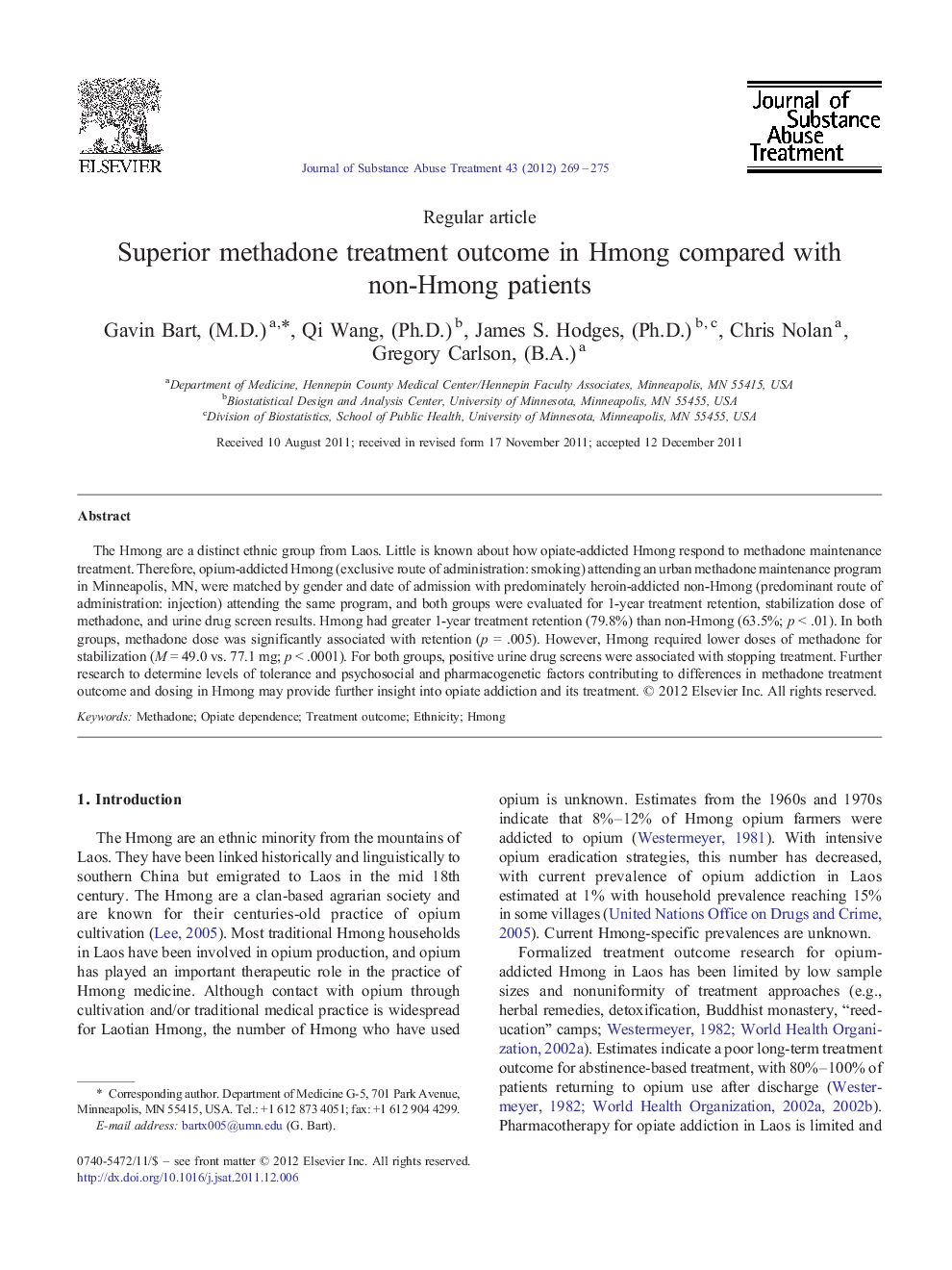| Article ID | Journal | Published Year | Pages | File Type |
|---|---|---|---|---|
| 329837 | Journal of Substance Abuse Treatment | 2012 | 7 Pages |
The Hmong are a distinct ethnic group from Laos. Little is known about how opiate-addicted Hmong respond to methadone maintenance treatment. Therefore, opium-addicted Hmong (exclusive route of administration: smoking) attending an urban methadone maintenance program in Minneapolis, MN, were matched by gender and date of admission with predominately heroin-addicted non-Hmong (predominant route of administration: injection) attending the same program, and both groups were evaluated for 1-year treatment retention, stabilization dose of methadone, and urine drug screen results. Hmong had greater 1-year treatment retention (79.8%) than non-Hmong (63.5%; p < .01). In both groups, methadone dose was significantly associated with retention (p = .005). However, Hmong required lower doses of methadone for stabilization (M = 49.0 vs. 77.1 mg; p < .0001). For both groups, positive urine drug screens were associated with stopping treatment. Further research to determine levels of tolerance and psychosocial and pharmacogenetic factors contributing to differences in methadone treatment outcome and dosing in Hmong may provide further insight into opiate addiction and its treatment.
